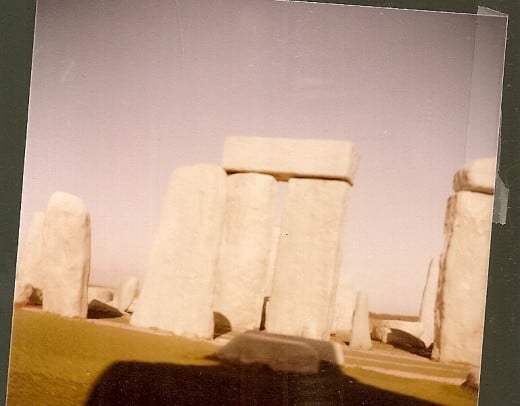Adventures in Archaeology: Stonehenge, England: My Spring Journals
My Spring Excavation, 1980, United Kingdom













Forget About the Druids and Hollywood Neo-Romanticism..
I was fortunate in 1980 to be included in an excavation at Stonehenge, England, in the Salisbury Plain. The photos were taken with an old Box Camera (I was a starving student!) but the images and haunting presence of the stones still comes through despite the poor technology. The excavation was called "rescue archaeology" as a pipe alongside the monument had been unearthed for repairs. None other than bonny Prince Charles (of the famous Princess Diana Scandal) commissioned the dig and once visited the site itself.
I was not paid for my work (I was a lowly volunteer research assistant) but the data was used in the College of Southampton University, England by a very respected Archaeologist there, Dr. Steven Shennan. Under his direction, my Ex-Husband and others assisted in digging, cleaning and bagging the evidence, in many ways like the crime shows we've all come to love.
I can still see the cute "excavation shack," surrounded by ancient velvety pasture and the British Bullocks, nosing their cow-noses up to the windows in curiosity. This was also the season for lambs, and they dotted the British landcape everywhere, adding to the enchantment. Stonehenge seemed to change according to every whim of the weather-often looking sunny and welcoming, sometimes almost sinister.
Forget, if you can, the romantic films depicting Druids and Crypto-New Agers, worshipping at the Stones, their robes flapping in the wind. The truth is, this amazing Monument was probably built by a Culture Known simply as the Bell Beakers, an independent Group which produced a distinctive pottery style.(see photo). This Culture Group was found in Northern Italy, Germany, Portugal and Southern France also. Again, there is simply no good evidence to support the notion that Stonehenge was used as a place of mystic worship or adoration. Then, you may well ask, what WAS it used for?
The remains of Cremated bodies and bones, strongly points to Stonehenge as being a place to bury the dead. In the same way we erected stone angels in old Victorian Graveyards, this site was most likely a large cemetary. I find it touching to see this reverence for life in Bronze Age/Neolithic Britain: after all, movies like to portray our forebearers as spear carrying, grunting mesomorphs. The truth is, in 2500 BC (date is an estimate) ancient Britons were burying their dead in a respectful and highly ornamental manner.
The stones--called Sarsins--might have been carried down from Wales. That is what our little excavation discovered. We also found evidence of dog bones and pig bones from feasting. Whether they ate dogs is unsure. Cultures such as the ancient Native Americans used dogs to pull heavy objects and assist heavy labors in other ways.As to how they erected these stones with such astronomical accuracy..well, that is not something we could discover from digging along the pipeline. Other excavations have uncovered far, far more and can be found online by simply googling Stonehenge, Archaeological Discoveries.
Stonehenge is situated in the general area of Amesbury, Southern England, where many monumental looking stones can easily be seen while hiking about. Unlike many excavations, which involve crude conditions and back-breaking work, we were kept at a lovely Old English Mill House, and did lunch at the local Pub in Lockeridge. British Archaeologists have no qualms about ordering a pint of nutty ale to go with lunch or a drink called a Shanty.I can still taste the simmering stew, made with white wine and crusted bread and cheese on top. But then, I was there many years ago. Everything changes, and alas not always for the better. I prefer English Lambs and bluebells to condos and cell phones, anyday, anytime.








